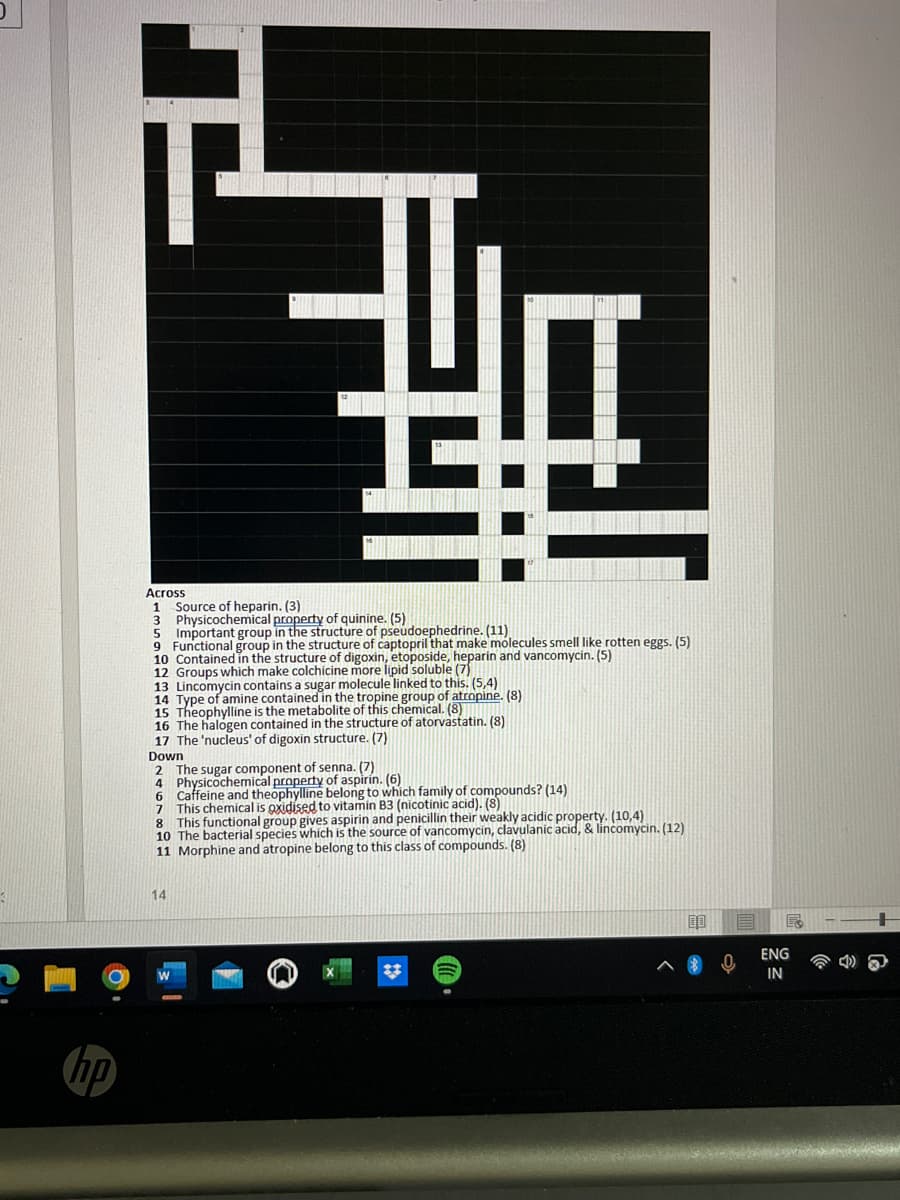Across 1 Source of heparin. (3) 3 Physicochemical property of quinine. (5) 5 Important group in the structure of pseudoephedrine. (11), 9 Functional group in the structure of captopril that make molecules smell like rotten eggs. (5) 10 Contained in the structure of digoxin, etoposide, heparin and vancomycin. (5) 12 Groups which make colchicine more lipid soluble (7) 13 Lincomycin contains a sugar molecule linked to this. (5,4) 14 Type of amine contained in the tropine group of atropine. (8) 15 Theophylline is the metabolite of this chemical. (8) 16 The halogen contained in the structure of atorvastatin. (8) 17 The 'nucleus' of digoxin structure. (7) Down 2 The sugar component of senna. (7) 4 Physicochemical property of aspirin. (6) 6 7 Caffeine and theophylline belong to which family of compounds? (14) This chemical is oxidised to vitamin B3 (nicotinic acid). (8) 8 This functional group gives aspirin and penicillin their weakly acidic property. (10,4) 10 The bacterial species which is the source of vancomycin, clavulanic acid, & lincomycin. (12) 11 Morphine and atropine belong to this class of compounds. (8)
Carbohydrates
Carbohydrates are the organic compounds that are obtained in foods and living matters in the shape of sugars, cellulose, and starch. The general formula of carbohydrates is Cn(H2O)2. The ratio of H and O present in carbohydrates is identical to water.
Starch
Starch is a polysaccharide carbohydrate that belongs to the category of polysaccharide carbohydrates.
Mutarotation
The rotation of a particular structure of the chiral compound because of the epimerization is called mutarotation. It is the repercussion of the ring chain tautomerism. In terms of glucose, this can be defined as the modification in the equilibrium of the α- and β- glucose anomers upon its dissolution in the solvent water. This process is usually seen in the chemistry of carbohydrates.
L Sugar
A chemical compound that is represented with a molecular formula C6H12O6 is called L-(-) sugar. At the carbon’s 5th position, the hydroxyl group is placed to the compound’s left and therefore the sugar is represented as L(-)-sugar. It is capable of rotating the polarized light’s plane in the direction anticlockwise. L isomers are one of the 2 isomers formed by the configurational stereochemistry of the carbohydrates.

Step by step
Solved in 2 steps




